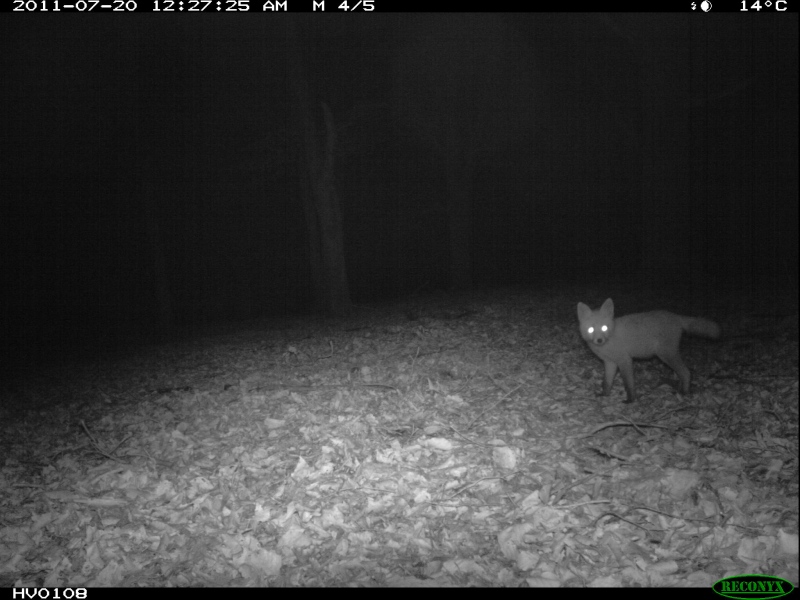Overview
This data set contains approximately 25,000 camera trap images representing 20 species (for example, the most common labels are red deer, mouflon, and white-tailed deer). Images within each sequence share the same species label (even though the animal may not have been recorded in all the images in the sequence). Around 900 bounding boxes are included. These are very challenging sequences with highly cluttered and dynamic scenes. Spatial resolutions of the images vary from 1920 × 1080 to 2048 × 1536. Sequence lengths vary from 3 to more than 300 frames.
Citation, license, and contact information
If you use this data set, please cite the associated manuscript:
Zhang, Z., He, Z., Cao, G., & Cao, W. (2016). Animal detection from highly cluttered natural scenes using spatiotemporal object region proposals and patch verification. IEEE Transactions on Multimedia, 18(10), 2079-2092. (bibtex)
This data set is released under the Community Data License Agreement (permissive variant).
For questions about this data set, contact Hayder Yousif and Zhi Zhang.
Update: it appears that those email addresses no longer work, but I don’t feel quite right removing them from the page, so I’m leaving them crossed out for posterity. For most questions about this dataset, info@lila.science can help.
Data format
Annotations are provided in the COCO Camera Traps .json format used for most data sets on lila.science. Note that due to some issues in the source data (see below), bounding boxes are accurate, but for images that have multiple individuals in them, a bounding box is present for only one. For these images, we have added a non-standard field to the .json file (“n_boxes”) which indicates the number of animals that actually exist in the image, even though a bounding box is present for only one. We hope to fix this at some point, and it’s only 79 images, and we know exactly which ones they are (here’s a list), so if someone wants to send us updated bounding boxes for those images, we will (a) update the .json file and (b) buy you a fancy coffee.
Annotations are also provided in the whitespace-delimited text format used by the authors (inside the zipfile, along with a README documenting its format), though we recommend using the .json file; the filenames in the text file don’t correspond precisely to the image filenames, and (as per above) most images that have multiple animals include redundant bounding boxes, rather than multiple unique bounding boxes.
For information about mapping this dataset’s categories to a common taxonomy, see this page.
Downloading the data
Images are available in the following cloud storage folders:
- gs://public-datasets-lila/missouricameratraps/images (GCP)
- s3://us-west-2.opendata.source.coop/agentmorris/lila-wildlife/missouricameratraps/images (AWS)
- https://lilawildlife.blob.core.windows.net/lila-wildlife/missouricameratraps/images (Azure)
A link to a zipfile is also provided below, but – whether you want the whole data set, a specific folder, or a subset of the data (e.g. images for one species) – we recommend checking out our guidelines for accessing images without using giant zipfiles.
Download links:
Images (10GB) (GCP link) (Azure link) (AWS link)
Metadata (.json, 1MB) (GCP link) (Azure link) (AWS link)
Having trouble downloading? Check out our FAQ.
Other useful links
MegaDetector results for all camera trap datasets on LILA are available here.
Information about mapping camera trap datasets to a common taxonomy is available here.

Posted by Dan Morris.